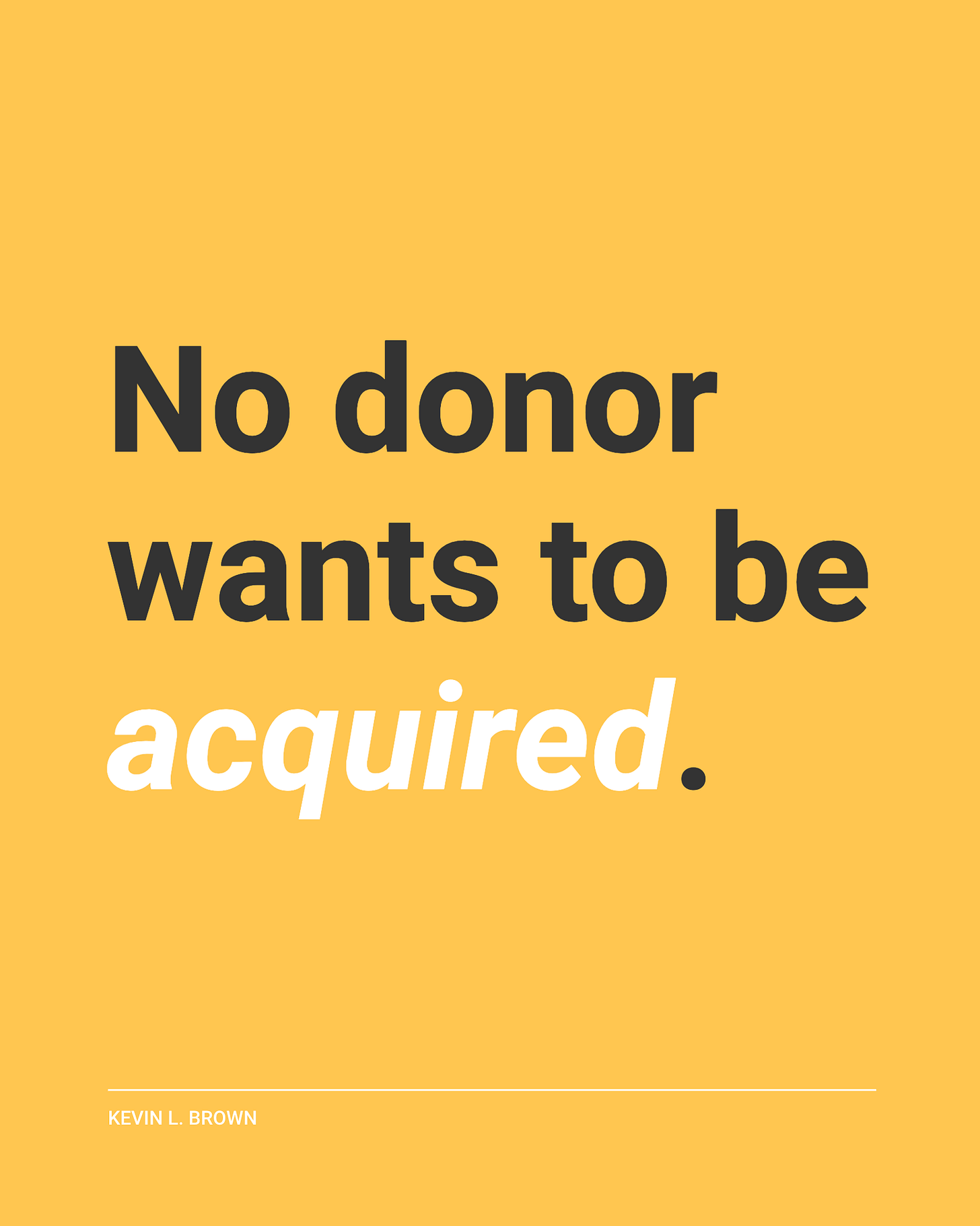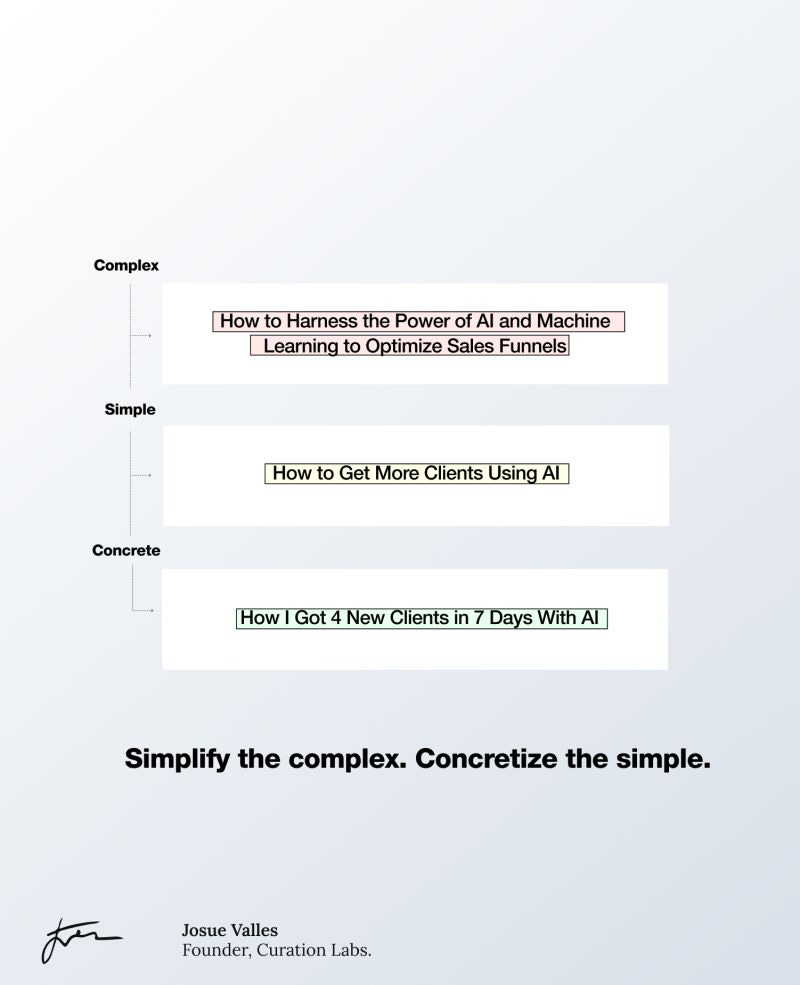No donor wants to be 𝙖𝙘𝙦𝙪𝙞𝙧𝙚𝙙.
Donor acquisition is the wrong term, wrong focus.
Funders aren’t livestock or land.
Or any other items we commonly acquire.
Because the definition of the word is to buy or obtain an asset or object. So calling it acquisition objectifies the entire fundraising experience.
“At best we acquire a name of a person with a giving history but that person does not know us,” says Jim Langley. “Even if we successfully solicit a gift, we still haven’t acquired a donor; we’ve caused a generous person to take a tentative step in our direction.”
There are three problems with acquisition. ⤵
1. It’s dehumanizing
Every one of your donors — from small online givers to institutional grantmakers — is a human on the other end.
Obvious.
So the typical practice of donor acquisition oversimplifies all the complex relationships that involve trust, alignment of values, and mutual benefits.
“Prospective donors… crave organic connection and impactful collaboration,” says
— a major donor herself — in Philanthropy Revolution. But “donating to charities feels onerous, dehumanizing, disrespectful, manipulative, and just exhausting.”2. It’s a marathon, not a sprint
The acquisition mindset promotes short-term thinking. And leads nonprofits to prioritize immediate donations vs. long-term donors.
So the cliché in our sector about “friendraising” might be a bit cheesy, but it’s the right idea. Because you never would say you need to acquire friends. Or acquire a spouse. Or acquire a community.
No, these relationships grow over time.
3. It’s being fundable (first) that gets funding
Obsessing over donor acquisition puts your energy on the wrong things. It makes nonprofit leaders push fundraisers to do more, more, more outreach and campaigns and awareness raising.
Instead, your foremost focus should be getting fundable and findable. First. And like a famous comedian once told rookie comics trying to break through the noise, “be so good they can’t ignore you.”
Because it’s easier to make things people want, than to make people want things.
Brace yourself. ⤵
No marketing plan, publicity gimmick, flashy communications, or acquisition ideas will convince donors to give you money, if your stuff isn’t worthy.
So how do you be so good funders can’t ignore you?
You begin with your brand strategy.
Always a theory of change (brand).
A positioning strategy (brand).
A strategic plan (brand).
Even if you don’t do a bit of marketing communications (also brand).
Then you get to work. Creating impact. Becoming unignorable. And fundraising wins will follow.
That’s brand building.
And that’s why we should think of it as donor building too.
Not donor acquisition.
Because donors are people, not prey.
Stop the hunt.
💪🏽💛
The Daily Bonus
This post is the first of four in a new series this week on the traditional donor/fundraising cycle.
Today’s topic: donor acquisition (wrong term, wrong focus).
Wednesday: donor cultivation (everyone is a fundraiser, er, communicator!)
Thursday: donor solicitation (two tales fail, one prevails)
Friday: donor stewardship (should be rebranded)
Stay tuned…
The Double Daily Bonus
Copywriting 101, from Josue Valles:
If your ideas are complex, simplify them.
Break them down
Use analogies
Tell stories
Make them digestible
If they are simple, make them concrete.
Add examples
Provide context
Paint a picture
Make them memorable
Simplify the complex.
Concretize the simple.



